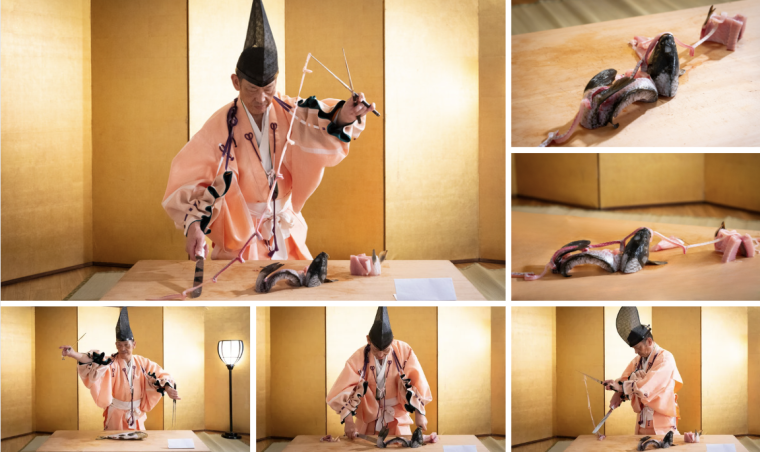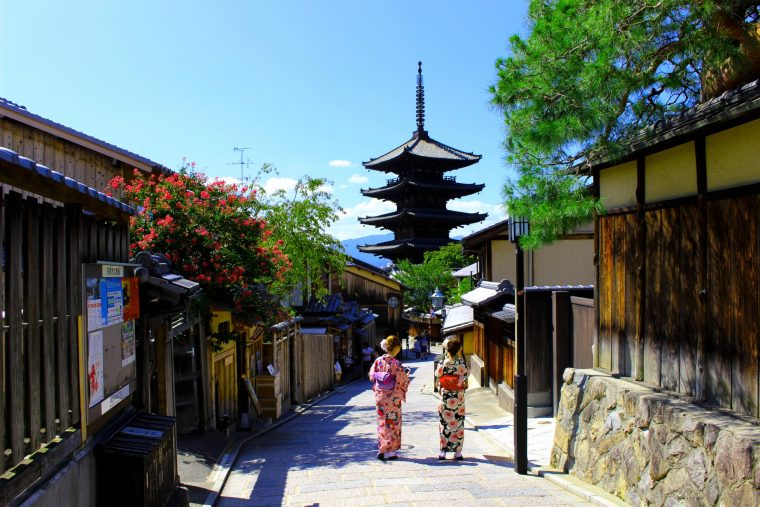How to watch Jidai Matsuri efficiently
Masaya Osada
Latest posts by Masaya Osada (see all)
Jidai Matsuri is one of the biggest autumnal festivals in Kyoto held on October 22. If you have a chance to come to Kyoto on October 22, you could watch the festival’s procession with various kinds of historical costumes such as samurai, princesses or commoners at the same time. This festival has been popular among local people and today it is also known among foreign tourists. At the festival venue, a lot of foreign tourists have been seen recently. However, you might think how to get tickets or where to view. Here is the total information of Jidai Matsuri.
Contents
What is Jidai Matsuri?
Jidai Matsuri literally means the Festival of The Age, which is listed as one of the Kyoto’s three biggest festivals. Other two festivals such as Aoi (Hollyhock) and Gion are held in spring (May) and summer (July) respectively. In particular, Jidai Matsuri is noted as an autumnal festival. It is held on October 22 every year. Speaking of October 22, it is the day when Kyoto turned to be the Japan’s capital in 794.
Date: October 22 every year
Procession Time: from noon to 2:30 ( top group )
Starting Place: Imperial Palace
Procession course: from Imperial Palace to Heian Jingu Shrine
■Background of the festival, Jidai Matsuri
Unlike Aoi Festival or Gion Festival, Jidai Matsuri is relatively a new festival. It began about 120 years ago. About 150 years ago, Japan converted into an Emperor-centered modernized country from the Shogun governed country. At the same time, the Emperor and nobles moved to Tokyo from Kyoto. After the Emperor’s movement, people in Kyoto tried to flourish the city again. One of them was to build Heian Jingu Shrine in accordance with the National Exhibition in Kyoto. The shrine was built modeled after the 8th century’s Imperial Palace. The shrine was dedicated to the founder of Kyoto capital, the Emperor Kanmu. Then they started the festival to show a deity, the spirit of the Emperor Kanmu, the prosperity of Kyoto.
Later the shrine added to be dedicated to the last Emperor of Kyoto capital, the Emperor Komei. So today Jidai Matsuri is organized as two deities procession with people wearing historical costumes.
■The feature of Jidai Matsuri
The festival is featured by the procession of people who wear historical costumes during the capital days of Kyoto, from over 1000 years ago to the mid-19th century. The procession consists of around 20 groups which include around 2000 participants. And the procession starts from the mid-19th-century costume group to older costume groups.
The procession starts at noon from the Kyoto Imperial Palace and ends at 2:30 pm to Heian Jingu Shrine. The procession is very long, so it takes around 2 hours to pass by.
Before the procession, the deities of Heian Jingu Shrine were moved to the Kyoto Imperial Palace. Then the procession means that the deities of Heian Jingu Shrine return to the shrine taking historical people as viewing the prosperity of Kyoto.
■Viewing style
For both tourists and local people, viewing style has two ways. One is standing along the road and the other is having a seat. The seats are required to pay.
The highlights of Jidai Matsuri
The procession starts from the mid-19th-century group. The procession groups proceed from new days to old, from the mid-19th century to the 9th century. Here show the highlights of Jidai Matsuri.
|The last capital days of Kyoto (Around the days of Meiji Restoration )
The first group shows the Pro-Emperor group samurai warriors who lived in the outskirt of Kyoto. Then some famous samurai walks after the Pro-Emperor group samurai. They are very popular among Japanese people and strong supporters to establish the new Emperor centered government.
Speaking of the last capital days of Kyoto, about 150 years ago, Japan was disordered between Pro-Samurai group and Pro-Emperor group. The Pro-Emperor group aimed to establish the new Emperor centered government instead of the Samurai government.
|The Samurai days ladies
The first women’s group consists of samurai days ladies. The woman who rides on the open-top carriage is the Shogun’s wife. (the Shogun is the head of a samurai and actual rulers.) She’s from an Imperial family member. She wears layered kimono (Juni Hitoe ) with heart-shaped hairstyle (Osuberakashi ).
Her style is inherited in today’s Imperial family. When an enthronement ceremony or wedding ceremony is held, the Imperial family members wear such costumes with the heart-shaped hairstyle.
|Ox carriage
Ox carriages were used when samurai or nobles went to the Imperial Palace over 1000 years. Unlike horse carriages, ox carriages usually move slower. Even if Samurai were actual politicians, they used an ox carriage to show the respect to the Emperor.
|Samurai warriors
In the procession, several samurai warriors groups can be seen. When samurai went to the battle to expand their domains or to show their loyalty to the Emperor, they wore protective costumes with helmets. In particular, in the procession Samurai leaders ride on horses with wearing big decorated helmets to show them bigger. The decorative helmets designs are one of the eye-catching points. Among Japanese samurai leaders are popular and their battle costumes are attracted.
Originally Samurai warriors emerged as the guardian of the Emperor or nobles. Later they governed Japan with their power instead of nobles. Samurai warriors were the actual rulers from the end of 12th century to the mid-19th century.
Samurai warriors
|Court ladies
In the middle of the procession, two women ride the open top carriage. The two women are Lady Murasaki, the author of the world’s oldest novel called the tale of Genji, and Sei Shonagon, the essayist. They were active around 1000 years ago as educational instructors for Imperial princesses and left the novel or essay written in Japan’s unique character, Hiragana.
They wear layered kimono as same as the shogun’s wife. This means that the layered kimono style lasts over 1000 years. And they have straight long hair without knotting. At that time the long straight hair was the symbol of women’s beauty.
Murasaki Shikibu, the author of “The Tale of Genji”
|Deities
Almost the end of the procession, an actual highlight appears. The highlight is two dark-colored palanquins with a phoenix top respectively. The Phoenix means the Emperor rides on the palanquin. The two deities ride on each palanquin. Each palanquin is carried by tens of men.
|Shirakawa ladies
Just after the deities group, women who carry flower basket on their head. They are called Shirakawa ladies. Since they are commoners, their attire is simple. However, historically, they carried flowers for the Emperor.
How to view effective ways of the Jidai Matsuri
Here shows how to effective ways of Jidai Matsuri such as getting tickets, viewing without tickets and transportation on the festival day.
■Getting Jidai Matsuri tickets
As mentioned, there are two types of viewing. If you would like to view less stress, it would be better to get seated tickets. There are three viewing spots, the Imperial Palace, Oike street (near the downtown Kyoto ) and Jingu Michi (near the Heian Jingu ). In particular, the Imperial Palace would be better as the participants of the procession are not tired. If you would like to get seated tickets, click on the following site. (KYOTO CITY OFFICIAL TRAVEL GUIDE) Tickets cost 2,050 yen per one seat.
■Viewing Jidai Matsuri from roadsides
If you don’t need seated tickets, you can get a lot of chances to see the procession. It would be better to check the route on this website and to get to the front line over an hour before the procession passes. Recommended places are ‘In front of Kyoto City Hall ‘, ‘ Sanjo Ohashi bridge ‘ and ‘ In front of Heian Jingu Shrine ‘.
■Transportation to get to Jidai Matsuri
The best transportation way is Kyoto subway as roads are so congested due to the festival, and the procession proceeds almost along the subway line. Even if you have a one- day bus ticket, to avoid road congestion, let’s take the subway. You would feel that the subway is the most convenient way.
■Postponement or not
Sometimes Jidai Matsuri postponed due to bad weather. If October 22 is rain, the festival is postponed the next day, October 23. The festival headquarter announces whether to postpone or not in the morning of October 22. However, the 2017 festival was called off due to a big typhoon. It was the first time to call off Jidai Matsuri due to weather.
Amid the vibrant tapestry of Jidai Matsuri, another cultural gem worth noting is the Hochoshiki Knife ceremony. This traditional ritual symbolizes the art of crafting and the spirit of the samurai, intertwining the precision of knife-making with the grace of ceremonial practices. Witnessing the ceremony adds another layer of depth to the festival’s celebration of Kyoto’s rich history.
https://www.hochoshiki-knifeceremony.com/

A sacred place for Japanese food, a treasure house of ingredients, Minami-Boso Takaya Shrine Kitchen knife ceremony "Ryumon-no-Koi" long story: edited by Minamiboso City Tourism Association Channel
Conclusion
Actually, Jidai Matsuri in 2017 was called off due to an out of the seasoned typhoon. However, the 2018 festival would be held more splendidly. So check this article and watch efficiently.
Make an online reservation to have a precious time with Geisha!

